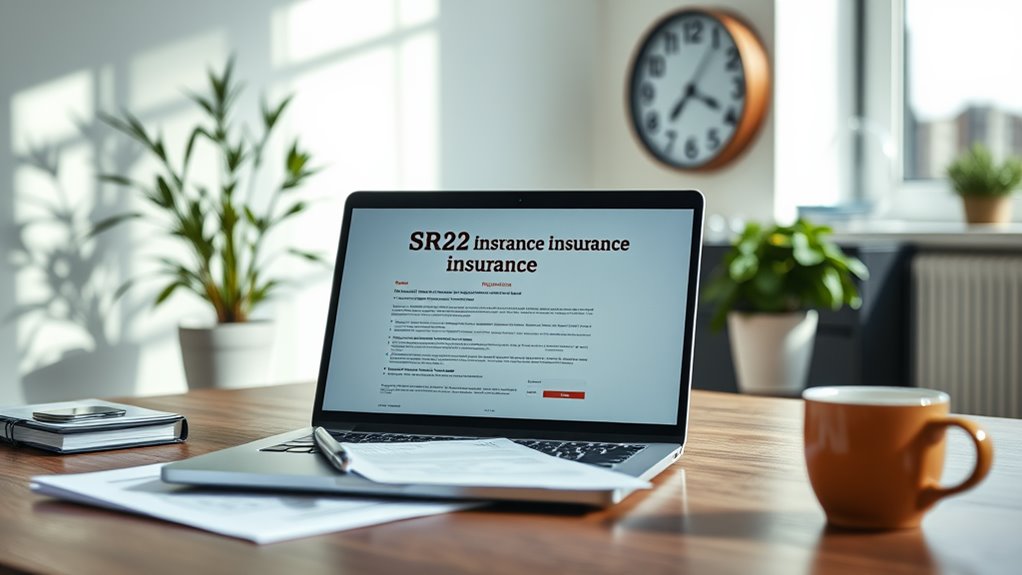Filing an SR22 online can feel like steering through a maze; one wrong turn and you might find yourself lost in a sea of paperwork. But with the right steps, you can streamline the process. Start by choosing an authorized insurance provider and obtaining quotes. Once you've secured your policy, there's an essential step left that many overlook. Understanding this will guarantee you stay compliant and avoid unnecessary complications. Let's explore how to make this process smoother.
When you find yourself needing to file an SR22, understanding the process can save you time and avoid complications. An SR22 is a certificate of financial responsibility required for high-risk drivers, often mandated after serious offenses like DUIs. This form proves you have the necessary insurance coverage to maintain your driving privileges. Typically, you'll need to carry the SR22 for three years, depending on your state's regulations.
To start, you need to determine if you require an SR22. This can come through a court order or notification from your state. Once confirmed, your next step is to contact an insurance provider authorized to file SR22 forms. It's essential to shop around and obtain quotes, as prices can vary considerably between companies. After selecting a provider, you'll purchase SR22 insurance. Request that your insurer file the SR22 form on your behalf and be prepared to pay a filing fee, usually ranging from $15 to $50.
Determine if you need an SR22, then shop for quotes from approved insurance providers to secure coverage and file the necessary forms.
In today's digital world, filing an SR22 online is the most efficient method. Insurance companies typically transmit SR22 forms electronically to state agencies, which helps you avoid delays associated with manual submissions. Most electronic filings occur in batches during the evening, and you can expect processing the next morning. After submission, your state agency will respond with either an acceptance or rejection status, allowing you to stay informed about your filing status. Additionally, AAMVA's electronic SR22/26 application automates filings, ensuring a streamlined process for both the insurer and the state.
Maintaining continuous insurance coverage is vital during this period. If there are any lapses in your coverage, your insurance provider is obligated to notify the state, which could lead to suspension of your driving privileges. To avoid complications, verify that your coverage remains active for the entire duration that the SR22 is required.
Once you're ready to remove your SR22, you'll need to request cancellation through your insurance provider. This process requires filing an SR26 form to officially cancel the SR22. Importantly, you must notify the state at least ten days before termination, as the SR22 won't automatically be removed once its term ends. After cancellation, you may find that your insurance rates decrease, but this depends on various factors, such as your driving record and current market conditions.
If you're not filing electronically, you can obtain SR22 forms from third-party vendors. Additionally, it's wise to contact your local DMV for specific requirements and deadlines related to your SR22 filing. Keeping organized records of your SR22 filings guarantees compliance and allows you to track your progress.
Regularly reviewing and updating your insurance policy is also advisable to align with your current needs and any changes in your situation.
Conclusion
Filing an SR22 online is like steering along a well-marked path—you just need to follow the signs. By choosing a reliable insurance provider, securing your policy, and ensuring timely electronic filing, you're setting yourself up for success. Remember, maintaining continuous coverage is essential, as lapses can lead to complications down the road. With diligence and attention to detail, you can smoothly shift through this process, paving the way for a brighter, more responsible driving future.





